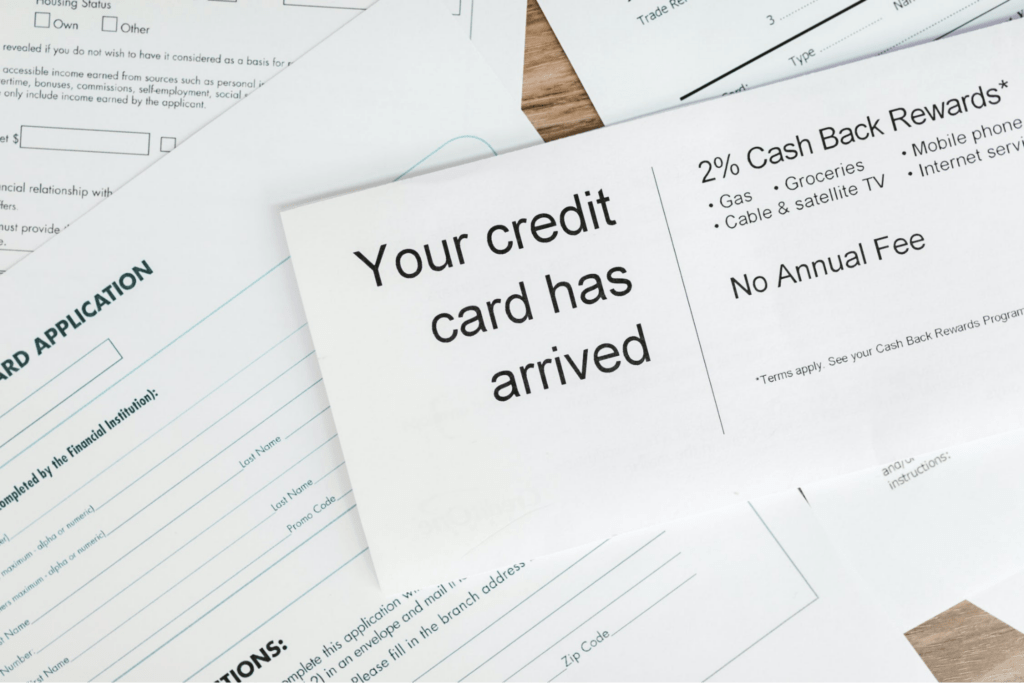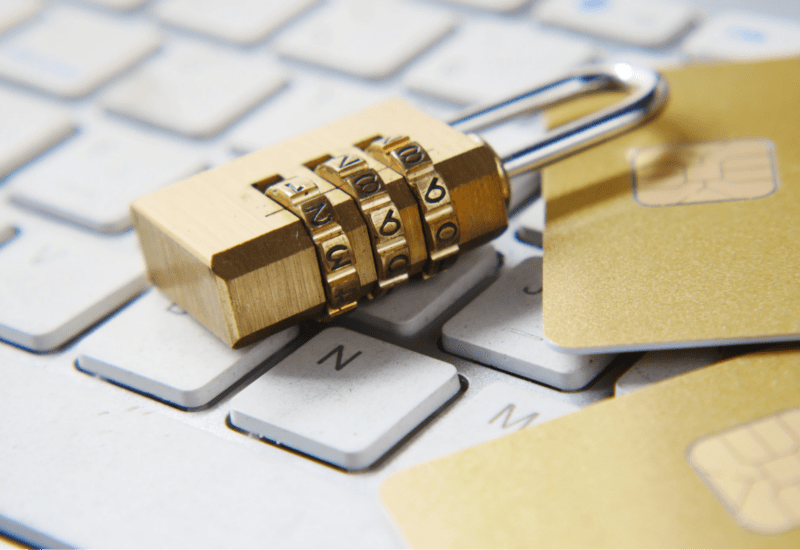Start Building Your Child’s Credit
Minors and young adults typically can’t access financial products independently, which means most don’t have credit profiles. So why do many parents freeze their children’s reports, and how can you even go about it if your child doesn’t have one?
As counterintuitive as it may sound, a lack of a credit report is all the more reason to request a credit freeze for children. Your child is more likely to fall victim to financial fraud if they don’t have a report, and freezing their credit file can proactively counter this risk—to an extent.
This guide will show you how a credit freeze works and whether you should request one for your child. You’ll also learn how to do it and what else you can do to keep your child’s financial data out of harm’s way.
What Is a Child Credit Freeze?
A credit freeze makes a user’s credit file inaccessible to new creditors and most third parties. If a lender can’t access your credit report, they won’t consider you as a borrower. With this in mind, a credit freeze is typically done for two reasons:
- Preventing haphazard credit inquiries
- Stopping unauthorized parties from opening accounts in the individual’s name
Hard inquiries can damage your credit profile, so they should be kept to a minimum. Some people freeze their reports to avoid making impulsive inquiries and opening new credit accounts that would overwhelm them with debt.
The second reason is more common, though, especially when it comes to minors’ credit reports. Parents freeze their children’s files to preemptively keep malicious parties at bay.
If your child is under 16 years old, you must request a credit freeze for them—older minors and young adults can do it independently. If the child doesn’t have an established credit report, the credit bureau will open one and freeze it immediately.
Note that your child’s report won’t be inaccessible to everyone. Several institutions can see frozen credit reports, including:
- Existing creditors
- Government agencies (local, state, or federal)
- Collection agencies employed as a result of unpaid debt
This shouldn’t be a concern because the freeze would still fulfill its main purpose—preventing the opening of credit accounts with new financial institutions.
Should You Put a Credit Freeze on Children’s Reports?

Source: RODNAE Productions
A credit freeze can be a smart move toward identity theft prevention. It can also mitigate the aftermath of this crime to an extent so that the damage doesn’t get out of hand. If you believe your child may have fallen victim to identity fraud, you should freeze their report immediately.
Some of the tell-tale signs of child identity theft include:
- A credit report without a legitimate credit history
- Bills in the child’s name
- Credit cards or preapproval letters addressed to the child
You shouldn’t wait until you notice these signs to take action. Every parent wants to believe identity theft won’t happen to their child, but statistics show this issue is more common than you might think. One in 50 children falls victim to it annually, and such crime robs U.S. families of around $1 billion every year.
To understand why identity theft is so prevalent, you must know what makes children’s private information so valuable.
Why Fraudsters Target Children’s Information
Typical identity fraud involves impersonation—the fraudster steals someone’s Personally Identifiable Information (PII) and uses it to access their existing credit accounts or open new ones. Children are at risk of a more elaborate form of this crime—synthetic identity fraud.
Minors’ Social Security numbers (SSNs) are “clean” and unmonitored, so the perpetrator can combine them with fake information like names and addresses to forge a new identity. The following comparison from the Federal Reserve’s whitepaper on synthetic identity fraud shows the difference between conventional and synthetic identity fraud:

Source: The Federal Reserve: Synthetic identity fraud in the U.S. Payment System
As shown above, synthetic identities are used to build a fresh credit record and defraud financial institutions. The goal of a credit freeze is to prevent this by ensuring new creditors can’t access the file until you unfreeze it.
How To Request a Credit Freeze for Kids
Helpful as it may be, a credit freeze still isn’t the most convenient way to protect your child’s credit report. To ensure there are no vulnerabilities a fraudster can exploit, you need to submit a request to all three credit bureaus:
- Experian
- Equifax
- TransUnion
Experian and Equifax have specific forms you must print and fill out, while TransUnion requires a written request. For security reasons, you can’t request a credit freeze for a child online but must mail the request alongside copies of personal documents to the following addresses:
| Credit Bureau | Mailing Address |
| Experian | Experian Security Freeze, P.O. Box 9554, Allen, TX 75013 |
| Equifax | Equifax Information Services LLC, P.O. Box 105788, Atlanta, GA 30348-5788 |
| TransUnion | TransUnion, P.O. Box 380, Woodlyn, PA 19094 |
The requested documentation may vary but typically includes copies of:
- Both parties’ Social Security cards
- Government-issued proof of identity
- The child’s birth certificate, court order, or other proof of the requestor’s authorization to place a credit freeze
If your child is 16 or older, they can request a freeze online by opening accounts with each credit bureau and using their portals. Some credit bureaus may also let them freeze and unfreeze the report through an app. Neither option is available to younger children, so you must mail printed paper copies of the requests and relevant documents.
Credit bureaus are legally obligated to freeze your child’s report no longer than three business days after receiving the request. Credit freezes are also free under the Economic Growth, Regulatory Relief, and Consumer Protection Act of 2018, so you won’t incur any fees.
Drawbacks of Placing a Credit Freeze on a Child
A credit freeze comes with a few caveats besides the inconvenience of having to obtain and mail paper copies of documents. Credit bureaus warn that they don’t guarantee protection and that their main use is to limit the damage the fraudster can do after stealing someone’s identity.
The reason for this is a lack of timely theft detection mechanisms. Checking in with the credit bureau is the most common way to spot signs of identity theft. If your child has a report without a legitimate credit history, it might be too late for prevention.
Another problem with freezing a child’s credit report is that doing so stunts their ability to build a strong credit profile. Their options are already quite limited as the CARD Act of 2009 made it hard for anyone under 21 to obtain credit cards, so there’s not much you can do to help besides adding a child to your card.
Even if you do, your child’s credit activity associated with the card will be deleted from their file when you remove them, so they’d have to start from scratch. Your child can’t get their own card or a loan as long as their credit report is frozen, so establishing and improving their credit score would be a struggle.
The good news is that there’s a way to reduce the risk of identity fraud while helping your child build credit early on—FreeKick.
Build Your Child’s Credit and Protect Their Identity With FreeKick
There are two aspects of a good credit profile—a secure identity and a good credit score. Offered by Austin Capital Bank, FreeKick is an FDIC-insured deposit account that helps you cover both these aspects for your child.
Steps for Using FreeKick’s Credit Building Service
Your child is eligible for FreeKick’s credit building service if they’re between the ages of 13 and 25. This service is a good way to help them establish a credit history early on in life in only three simple steps:
- Create an Account—Create an account at FreeKick.bank and choose a deposit that suits your budget
- Set It and Forget It—FreeKick will start building 12 months’ worth of credit history for your child
- Keep Growing—After 12 months, close the account without any fees or continue building credit for your child for another year
With these steps, your child can have up to five years of credit history when they turn 18. This will help them save $200,000 during their lifetime by helping them secure better loan terms and other financial benefits.
How FreeKick Protects Your Child’s Identity
Child identity theft happens every 30 seconds, and if your child falls victim to it, all your credit building efforts can go to waste. In the worst case, your child might get charged with crimes like credit card theft, so it’s a good idea to proactively invest in protecting their identity. FreeKick’s ID protection services include:
| Services for Minors | Services for Adult Children and Parents |
| Credit profile monitoring Social Security number (SSN) monitoring Dark web monitoring for children’s personal information Up to $1 million identity theft insurance Full-service white-glove concierge credit restoration Sex offender monitoring—based on sponsor parent’s address | Credit profile monitoring SSN monitoring Dark web monitoring for personal information Up to $1 million identity theft insurance Full-service white-glove concierge credit restoration Lost wallet protection Court records monitoring Change of address monitoring Non-credit (Payday) loan monitoring Free FICO® Score monthly FICO® Score factors Experian credit report monthly |
FreeKick Pricing
FreeKick offers two pricing plans:
| FDIC-Insured Deposit | Annual Fee |
| $3,000 | $0 (Free) |
| No deposit | $149 |
With both plans, you get:
- Credit building for six children aged 13 to 25
- Identity protection for two parents and six children aged 0 to 25
Make sure you cover all bases when setting up your child for financial success—sign up for FreeKick today.
Featured image source: Towfiqu barbhuiya

Freekick provides a double dose of financial empowerment and security for your whole family. It helps teens and young adults build strong credit profiles and offers identity motoring for up to two adult parents and six children under 25.





